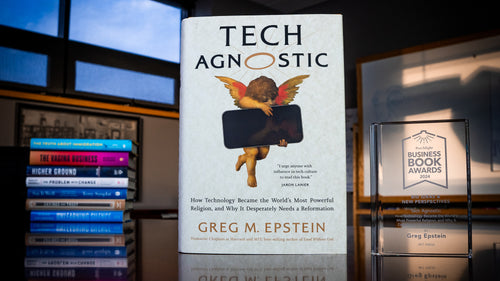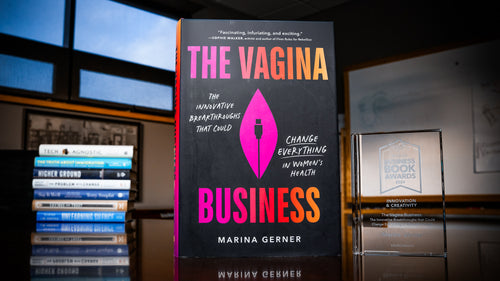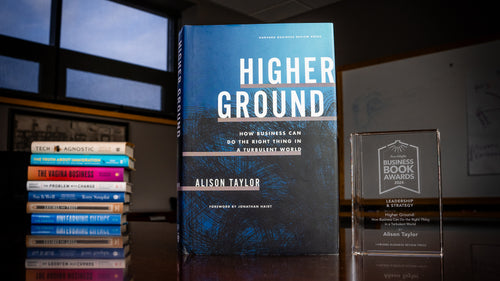The Customer Rules: An Interview with Lee Cockerell
 Lee Cockerell's new book, The Customer Rules, is a modest-looking volume of 39 'rules' for providing outstanding customer service. Despite the book's apparent simplicity, The Customer Rules offers readers essential advice ranging from the general—be nice—to the specific—never ever argue with a customer. While reading this book, I often found myself thinking, "Of course; this is a fundamental rule. Who doesn't know this?" I then immediately had two additional thoughts. The first is that I feel fairly certain that there are millions of people who could benefit from reading this book. I've been on the receiving end of sub-par customer service more times than I care to remember, and my general feeling is usually something along the lines of, "I wish I had gone elsewhere." Even if you're at your favorite restaurant or shop, if the wait staff or clerk is doing a bad job, it ruins the experience. Perhaps it's a bad attitude, or simply inexperience. Whatever the case, reading The Customer Rules can give under-performing service staff a chance to model great customer service.
The second thought is that even if you're already providing excellent service, you very well might need a 'refresher'. Much like a student of a religious text will read and reread the text in order to deepen his understanding and continue applying key principles, the quality of your customer service will benefit from periodical reminders. Page through The Customer Rules, pick a rule and task yourself with applying it consciously. This book is a tool for experienced service staff too, something to help keep your level of service at its very best.
Below are Lee's responses to five questions inspired by reading The Customer Rules and by Lee's reputation for leadership and excellence. Thanks, Lee, for taking the time to share these insights with us!
Lee Cockerell's new book, The Customer Rules, is a modest-looking volume of 39 'rules' for providing outstanding customer service. Despite the book's apparent simplicity, The Customer Rules offers readers essential advice ranging from the general—be nice—to the specific—never ever argue with a customer. While reading this book, I often found myself thinking, "Of course; this is a fundamental rule. Who doesn't know this?" I then immediately had two additional thoughts. The first is that I feel fairly certain that there are millions of people who could benefit from reading this book. I've been on the receiving end of sub-par customer service more times than I care to remember, and my general feeling is usually something along the lines of, "I wish I had gone elsewhere." Even if you're at your favorite restaurant or shop, if the wait staff or clerk is doing a bad job, it ruins the experience. Perhaps it's a bad attitude, or simply inexperience. Whatever the case, reading The Customer Rules can give under-performing service staff a chance to model great customer service.
The second thought is that even if you're already providing excellent service, you very well might need a 'refresher'. Much like a student of a religious text will read and reread the text in order to deepen his understanding and continue applying key principles, the quality of your customer service will benefit from periodical reminders. Page through The Customer Rules, pick a rule and task yourself with applying it consciously. This book is a tool for experienced service staff too, something to help keep your level of service at its very best.
Below are Lee's responses to five questions inspired by reading The Customer Rules and by Lee's reputation for leadership and excellence. Thanks, Lee, for taking the time to share these insights with us!
Creating Magic was a book for leaders. Reading The Customer Rules, I feel like this book is for not just leaders, but for everyone in the organization. Was it your goal to write something with broader application? How did the idea for this book come to you?
When I wrote Creating Magic I had just spent sixteen years as the senior executive of operations for Walt Disney World. When I first went to Disney in 1993, I was not satisfied with the leadership messaging for all of our leaders and potential leaders, so I developed a document titled Disney Great Leader Strategies. It became the bible for training and developing the 7000 leaders at Walt Disney World. This document had a powerful impact on the managers, helping them understand our expectations for world class leadership. The Disney Great Leader Strategies became the foundation for my book Creating Magic. While it was meant for leaders, it became quite popular at all levels of the organization,and especially with those who wanted to become managers and leaders in the future. Creating Magic became very popular. It is now in thirteen languages around the world and continues to sell well. One day I was talking to Talia Krohn, my editor at Random House, and she suggested I write a second book on customer service, since that is what I had focused on for 41 years with Hilton Hotels, Marriott International and The Walt Disney Company. At first I did not want to write another book because it is a lot of hard work, and I am retired after all. But the more I thought about it, the more I realized that I had some great experience behind me and that I could help a lot of organizations. So I said, "Let's do it," and I began putting into writing what I had learned about delivering sensational service from my experience in my four decades with three world-class organizations. The Customer Rules can help everyone from top executives down to the front line employees who face the customer every day. Since the customer truly rules, everyone in every organization had better know the rules for serving them. The new book leads with the admonition: be nice. Great advice! Is there a particular reason why you feel it bears mentioning? I was talking to my 13 year old granddaughter one day as I was about to start writing this book. I said to her, "Margot, I am about to write a new book titled The Customer Rules. What do you think are the most important rules for customer service?" Without a second hesitation she said, "Well Papi, the first rule is 'be nice.'" Children don't have any problem getting right to the point. They are not over thinking everything. They get right down to the basics when you ask them a question. Clarity comes naturally to children. I have found out in my own career that if you are nice to people which means being friendly, polite, pleasant, appealing, kind, considerate, well mannered, and refined that they will give you the benefit of the doubt and forgive you if you don't know something or don't execute service for them perfectly. Even my granddaughter can tell you that! There is a growing conversation in the world of business and economics about a shift to a largely service-oriented economy. Do you think companies are ready for this shift? Do you think the average level of service is good now, and where do you see it going in the future? As the middle class continues to expand around the world there is a natural decline of manufacturing as businesses move their factories to where the wages and cost of business are lower. What's left is a large middle class population with money to spend so there is more and more demand for service related businesses. It happens in country after country. What is interesting is that the use of robots and automated manufacturing is starting to become cheaper than human labor so we are seeing the first signs of some factory production returning to the US because the cost per hour of a robot is about the same as an hourly wage in China. It will be interesting to see how this plays out. This is a concerning trend as it will leave many less-educated hands-on workers with no jobs. This will mean that we must solve the education problem in America or unemployment will continue to stay high since the majority of future jobs will be in the service or technical fields where a higher level of education will be required to perform the work. I don't believe most companies are giving the level of service it will take to keep their customers. Most companies don't understand the steps necessary to having a customer-centric culture and many don't keep their CEOs long enough to develop and implement a customer-centric organization. It can't be done overnight. Excellence takes time and effort. Most companies just focus on their products and not on their culture. You will see many of them bite the dust or be acquired in the next five years. The book offers 39 rules for great customer service. If you had to pick just one of these rules to communicate to businesses worldwide, which would it be? What advice do businesses most need to hear, and of course—why? Rule #3, Great Service Follows The Law of Gravity is the most important rule out of the 39, as far as I am concerned. What the boss wants gets done, and the boss is at the top of the organization. Not only do they need to want to have great service but they also must model that want in every way possible. The top person must talk about customer service relentlessly, they must support it with resources and they must constantly communicate with their customers and their employees to find out what they can do to support a customer-centric organization. The most important communication they can do is to listen intently to what their customers and employees are telling them and to get out into their businesses to find out the truth. You have a long reputation for creating great customer experience and customer service. What has been your inspiration, in the workplace or otherwise? I was fortunate enough to have a mother who would not stand for my brother and I doing something which we did not do well. Her favorite comment which we all have heard was, "Ifyou are not going to do it right then don't do it at all." I also had a great mentor when I worked at the Waldorf Astoria in New York by the name of Gene Scanlan. He was a great role-model and teacher. He taught me about attention to detail and insisted that we always make every guest feel special as we tended to their every request and Waldorf guests demand perfection. I think one thing which drives me is that I have a very positive "can do" attitude and I am a bit compulsive so I want everything to be just right. I am also very disciplined and organized so I always have time to tend to every detail.Lee Cockerell is the former Executive Vice President of Operations for the Walt Disney World Resort. Prior to spending ten years with Disney, Lee spent 8 years at Hilton and 17 years at Marriott. His first book, Creating Magic, which focuses on essential leadership strategies, has been translated into 13 languages. Lee now spends his time consulting for large companies worldwide, conducting leadership workshops, and speaking publicly. Learn more about Lee at his website: www.LeeCockerell.com.



